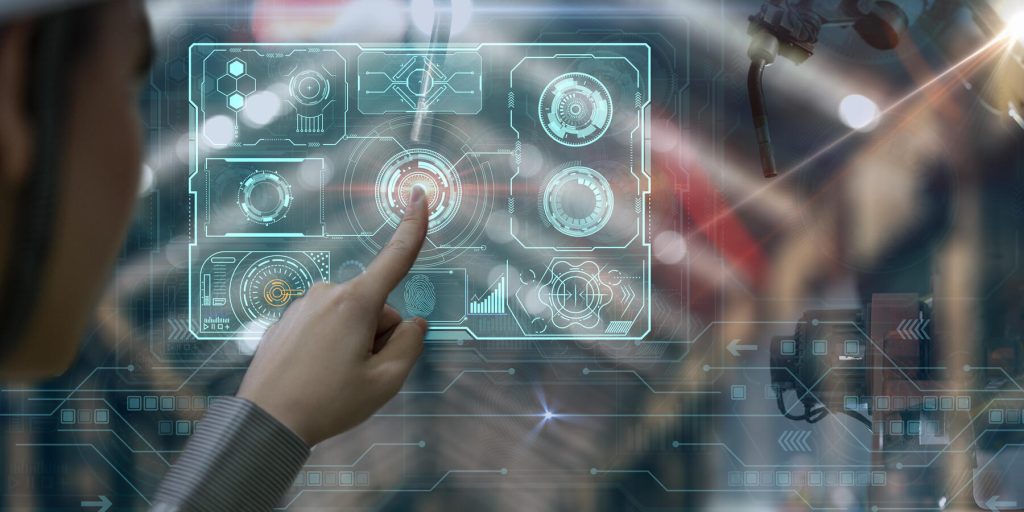
Industrial automation has long relied on reliable, functional systems. The first application was in 1764—the Spinning Jenny—which spun multiple threads simultaneously and reduced the work needed to produce cloth.
Since then, automation has made significant strides. But even as operations have advanced and digitalized, so has the need for more innovative and flexible solutions. Traditional automation products often lock users into specific ecosystems without providing substantial improvements. Stagnation can be a significant issue, and genuine innovation is long overdue.
Today, exciting new advances in automation software are reshaping the industrial landscape, offering greater scalability, performance, and integration. Beyond simply optimizing current operations, these innovations also prepare organizations for the challenges that lie ahead.
Let’s look at how these innovations are crucial for industrial companies, especially as operations grow and become more complex.
Innovation in industrial automation
Leading industrial automation software providers are developing solutions that break away from traditional constraints and offer significant enhancements in performance, flexibility, and integration.
This market is expected to reach over $218 billion by 2027, driven by technological advancements and demand for increased productivity. This shift is not only technological but also a change in mindset, requiring companies to recognize the limitations of their existing systems and invest in new technologies.
New industrial systems often focus on:
- Cost optimization throughout the plant life cycle, including reduced engineering time and operational downtime.
- OT and IT integration to enable seamless data flow, enhancing operational efficiency and decision-making.
- Scalability to support growing businesses that require systems to expand without losing performance and flexibility to adapt to ever-changing conditions on the supply and demand sides, all while also unleashing innovation as control application software is no longer tied to control hardware platforms.
- Artificial intelligence (AI), analytics, and machine learning (ML) to allow for fully autonomous automation by predicting equipment failures, reducing plant downtime, and improving quality control while also optimizing process and equipment performance, reducing cost, and extending the overall lifecycle.
- Cybersecurity to protect interconnected systems from cyber threats, ensuring reliability and integrity.
Embracing these concepts and innovations allows companies to achieve greater efficiency, scalability, and security, underscoring the necessity of investing in advanced automation solutions to meet industry demands.
Modernizing today’s industrial landscape
As the industrial landscape evolves, staying ahead with the latest automation technologies is crucial for long-term success. EcoStruxure™ Automation Expert, for example, continues to innovate automation to help future-proof operations. Its asset-based approach allows for hardware independence, offers customers flexibility with supply chain issues, and makes scaling your plant as simple as copying and pasting to reduce engineering time.
The newest offering of this advanced platform has many new features that help companies optimize operations, reduce costs, and improve performance. Below are some of the high-level optimizations coming with the latest version of EcoStruxure Automation Expert:
- Increased I/O capacity: Support for up to 5,000 I/Os per solution enables more efficient scaling for complex tasks and larger plant architectures. With its asset-based approach, multiple solutions can be created that leverage OPC-UA connectivity, scaling to the performance needs of any industrial plant.
- Reduced debug times and enhanced system stability: Better visibility and easier navigation can improve uptime by up to 20%, significantly boosting productivity.
- Build time performance: Improvements drastically reduce engineer action time. For example, deployment times for a 5,000 I/O solution have been reduced by 90%.
- Scalable architectures: Support for evolving operational demands and requirements is essential for industries where needs often change quickly.
- Integration capabilities: Multi-protocol support (Profinet, MQTT, OPC-UA) optimizes communication and data exchange. It also supports IT/OT convergence for improved data connectivity and interoperability.
- AI integration: Visual inspection tools enhance quality control and operational efficiency, improving defect detection rates by up to 90%. AI in industrial processing plants has reported 10-15% increases in production. This AI integration is the first step towards fully automated automation, minimizing user interaction and costs over the life of the plant.
Next-gen automation: Smart, secure, and streamlined
Staying ahead requires adopting next-generation technologies that enhance efficiency, security, and overall system performance. EcoStruxure Automation Expert’s latest version meets these demands with advanced features and capabilities highlighting the platform’s smart, secure, and streamlined nature:
- Improved user experience and engineering efficiency: Preconfigured asset libraries focus on scalable performance while providing a “low code/no code” engineering environment, significantly increasing engineering efficiency and code reusability. Optimized engineering tools streamline processes, boosting efficiency and productivity.
- Integrated AVEVA software: Enables digital continuity, allowing continuous data exchange throughout the lifecycle from engineering to operations. This enhances operations via advanced analytics and monitoring and significantly reduces engineering lead time.
- Compliance with current industry standards and protocols: Helps ensure compatibility and interoperability with various devices and systems.
- Comprehensive documentation and training: Newly tested, validated, and documented (TVDA) reference architectures and troubleshooting guides help users access detailed guides, tutorials, and best practices.
- Enhanced security protocols and features: Protect against cyber threats and maintain a robust security posture, boosting the integrity and reliability of the automation system.
- Improved capabilities for network segmentation to separate IT and OT networks
- Advanced encryption protocols to protect data integrity and confidentiality during transmission and storage
- Integrated, comprehensive security policies and procedures aligned with industry best practices
- Automated security updates help ensure that components are protected against the latest threats
- Integrated anomaly detection tools to monitor unusual activities and potential security breaches
Get started modernizing your industry
Just as the Spinning Jenny revolutionized the textile industry in the 18th century, EcoStruxure Automation Expert is transforming modern industries. Learn more here, or visit our forum to ask questions, grow your knowledge, and find technical experts in Industrial Automation.
You can also download our Universal Automation Manifesto to discover more about our approach to software-defined automation, which we believe will fuel innovation and long-lasting growth for decades to come.




Add a comment